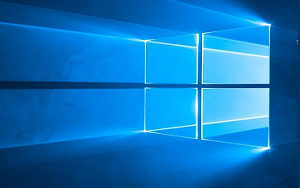Managing startup programs in Windows 11 is crucial for optimizing system performance. This article provides a detailed guide on how to efficiently control and configure startup applications using built-in tools and third-party software.
Introduction
Windows 11, with its sleek design and enhanced functionalities, offers users a modern computing experience. However, managing startup programs is essential for maintaining optimal performance. Startup programs are applications that automatically run when your computer boots up. While some are necessary, others can slow down your system. This guide will show you how to effectively manage these programs to ensure your machine runs smoothly.
Why Manage Startup Programs?
Startup programs can significantly impact your computer’s boot-up time and overall performance. By managing them, you can:
- Improve Boot Speed: Reduce the time it takes for your computer to start.
- Enhance Performance: Free up system resources for more critical tasks.
- Increase Security: Prevent unnecessary applications from running, reducing the chance of malicious software starting automatically.
Methods to Manage Startup Programs
1. Using Task Manager
The Task Manager is a built-in utility in Windows 11 that allows you to view and manage startup programs. Here’s how to use it:
- Press Ctrl + Shift + Esc to open the Task Manager.
- Navigate to the Startup tab.
- Review the list of applications that run at startup. The Startup Impact column indicates how each program affects boot time.
- To disable a program, right-click on it and select Disable.
Disabling unnecessary programs can improve boot times and overall system performance.
2. Settings Application
Windows 11’s Settings app offers another way to manage startup applications:
- Open Settings by pressing Windows + I.
- Go to Apps > Startup.
- Toggle off applications you don’t want to run at startup.
This method provides a user-friendly interface for managing startup applications.
3. Using the Registry Editor
For advanced users, the Registry Editor can be used to manage startup programs, though caution is advised:
- Press Windows + R, type
regedit, and press Enter. - Navigate to the following keys:
HKEY_CURRENT_USER\Software\Microsoft\Windows\CurrentVersion\Run
HKEY_LOCAL_MACHINE\SOFTWARE\Microsoft\Windows\CurrentVersion\Run - Review the listed entries and delete those you don’t recognize or need.
Always back up the registry before making changes, as incorrect modifications can harm your system.
4. Group Policy Editor
For Professional and Enterprise editions of Windows 11, the Group Policy Editor can be useful:
- Press Windows + R, type
gpedit.msc, and press Enter. - Navigate to Computer Configuration > Administrative Templates > System > Logon.
- Configure the Run these programs at user logon setting as needed.
This tool is especially useful in a corporate environment for managing multiple computers.
Using Third-Party Tools
Various third-party applications offer enhanced features for managing startup programs, such as:
- CCleaner: A popular tool that provides a comprehensive view of startup programs and allows easy management.
- Autoruns: An advanced tool from Microsoft that offers detailed insight into autostart programs, including those not listed in the Task Manager.
These tools provide additional features and detailed information, but always ensure they are downloaded from reputable sources.
Best Practices for Managing Startup Programs
- Regular Review: Periodically review startup programs to ensure only essential applications are enabled.
- Research Unknown Programs: If you encounter an unfamiliar program, research it to understand its purpose before disabling it.
- Backup Before Changes: Always back up important data before making significant changes to system configurations.
- Monitor System Performance: Keep an eye on system performance metrics to gauge the impact of enabled startup programs.
Conclusion
Managing startup programs in Windows 11 is a vital task for optimizing performance and boot speed. By using built-in tools like Task Manager and Settings, or advanced methods such as the Registry Editor and Group Policy Editor, you can take control of your system’s startup behavior. Additionally, third-party tools can provide further insights and management capabilities. Regular maintenance and review of startup programs will ensure your Windows 11 experience remains fast and efficient.







